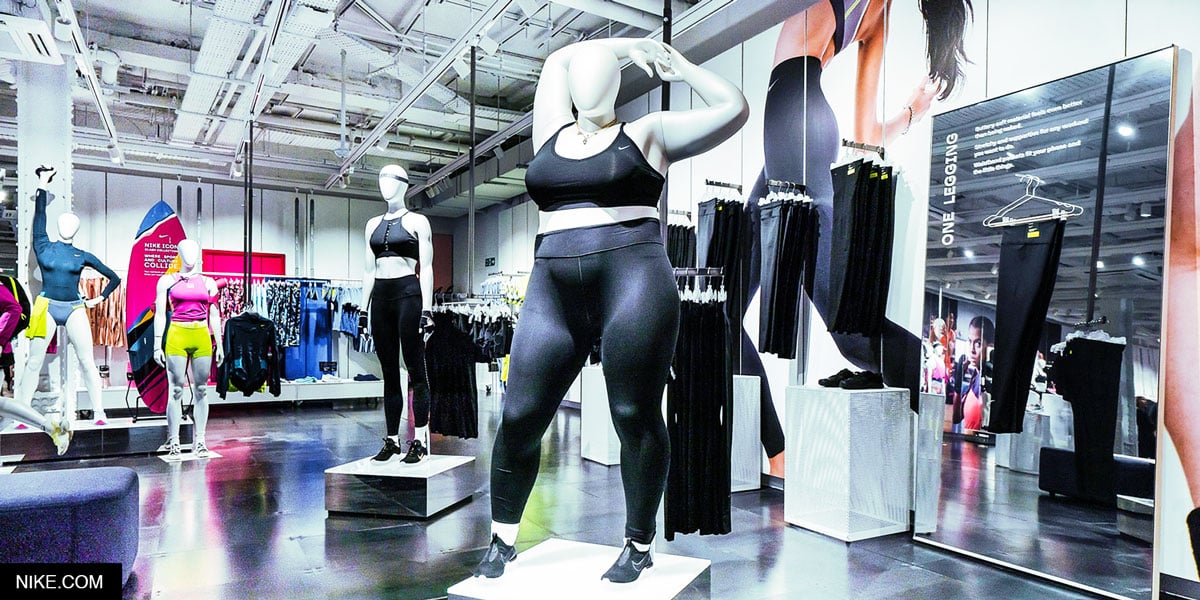
This past week, Nike introduced plus-size and para-sport mannequins to its flagship store in London. According to CNN, Nike’s press release stated, “To celebrate the diversity and inclusivity of sport, the space will not just celebrate local elite and grassroot athletes through visual content, but also show Nike plus size and para-sport mannequins for the first time on a retail space.”
Nike supporting body diversity is important because it acknowledges that athletes come in all shapes and sizes. A one-size model does not fit all, despite the popular notion that an athlete needs to look a certain way in order to be fit or in shape. How athletes view their bodies impacts their sport.
Warning signs of an eating disorder include:
However, even if these symptoms are not reflective of a full-blown eating disorder, it is common for people to engage with disordered eating at some point over their life-time. This may include restriction, purging, and over-exercising.
Being an athlete requires discipline. Discipline and hard work can morph into obsession, which is why a study conducted on Division 1 NCAA athletes found that “over one-third of female athletes reported attitudes and symptoms” that put them at risk for anorexia nervosa. Another study that was conducted on Division II college athletes reported that “25% had disordered eating, 26% reported menstrual dysfunction, 10% had low bone mineral density, and 2.6% had all three symptoms.” In support of these findings, the study “Female Collegiate Athletes: Prevalence of Eating Disorders and Disordered Eating Behaviors. Journal of American College Health” found that 25.5% of the college athletes that they surveyed had subclinical eating disorder symptoms. Of course, eating disorders were most prevalent in high level college athletes, dancers, and sports like figure skating, wrestling, and rowing since there is an emphasis on weight or size.
But this isn’t just a phenomena among college athletes. A study titled, “Associations Between Disordered Eating, Menstrual Dysfunction, and Musculoskeletal Injury Among High School Athletes. Yearbook of Sports Medicine” found that 41.5% of female high school athletes in aesthetic sports engaged in disordered eating. And because of their strained relationships with food and their bodies, they were eight times more likely to become injured than an athlete who did not report disordered eating.
Even though eating disorders are viewed as a feminized phenomena, men are at risk as well. Especially in sports that focus on weight and size. According to NEDA’s website, “In weight-class sports (wrestling, rowing, horseracing) and aesthetic sports (bodybuilding, gymnastics, swimming, diving) about 33% of male athletes are affected.”
Body image does not just affect women, it affects everyone. Nike has made a stride in the right direction this week, however in order to reach all athletes, they’ll have to include plus-size and para-sport mannequins throughout every floor of every store.

Some of the links on this website are affiliate links, and as an Amazon Associate, we may earn an affiliate commission from qualifying purchases – at no cost to you.
This website is for informational and/or entertainment purposes only and is not a substitute for medical advice, diagnosis, or treatment.
© 2025 Drew Pinsky Inc. | All Rights Reserved
Get alerts from Dr. Drew about important guests, upcoming events, and when to call in to the show.
For text alerts, msg and data rates may apply